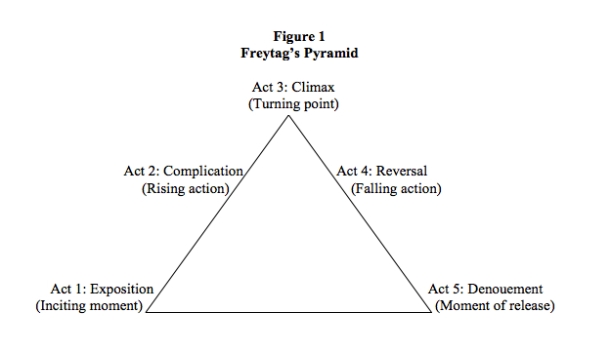For my 100th post on this blog, I thought I would share all 100 insights in one place. Each listing is a link back to the original post.
100 Insights For New Media Marketing:
1. Is New Media Killing Traditional Media’s Star?
2. Are Bloggers More Sensitive To Spin?
3. Technology Makes Us Dumber, Less Productive And Stressed Out
4. Which Advertising Medium Is best?
5. Can Direct Response Be Creative?
7. Why Does New Media Matter? Because United Breaks Guitars
8. The Last Thing We Need Is Another Blog
9. Walk A Mile In Zappos’ New Media Shoes
10. Tu Voz Rings True For Minority Marketing
11. More Information On Information Overload
12. Does Copy Matter Less On The Web?
13. Can The iPad Save My Newspaper?
14. Are You Ready For A Content Revolution?
16. Is There A Creative Process?
17. Is All Buzz Good And Cheap?
18. Brand Extensions Achieve MAXIMum Failure
19. Speak Softly And Carry A Big Marketing Stick
20. Is Facebook’s Privacy Policy Friend or Foe?
21. BP Can’t Get Beyond Petroleum
22. Are Mobile Ads Still Annoying?
23. Are Intellectual Property Rights Wrong?
24. EBSCO, Forbes, Time Open The Digital Divide
25. Yahoo Cheers Associated Content Acquisition–Society Jeers
26. Can Millennials Save Us Through Cause Marketing?
27. Creativity Beats Media In TV ROI
28. GM Recall Recalls Past PR Crises
29. Cause Marketing Or Crisis Response?
30. US Census: Bad Ads But Great Information
31. Where Is The Star Power In The Gulf Clean Up?
32. Cause Marketing’s Future Is Engagement Through Social Media
33. Churchill, TED And New Marketing
34. Blah, Blah, Blog: Why Companies Should Listen
35. Online Research: Temptations and Limitations
36. Does .005% Make A Difference? Ask Toyota
37. Can Marketing Statistics Improve Your NFL Team?
38. Celebrity, Media Outreach And Events Oh My!
39. Cable TV Decline: Media Planning Gets Tougher
40. Failed Test? Try An Ethnographic Study
41. Do We All Need Twitter Editors?
42. The Press Release, Blogger Outreach And SEO
43. New Media Needs A New Name
44. Public Relations Challenges For Non-profits
46. Corporate Communications, Marketing, IMC, PR and Advertising. What’s the difference?
47. Which Social Media Conversation Are You Joining?
49. Click Here: Digital Call To Actions
50. Measuring Print Response 2.0
51. Visual Continuity in Print And Digital
52. Brand Equity: Tangible Assets Are A Small Part Today’s Brand Value
53. Do You Have Social Media Fatigue?
54. Which Came First The Product Or Value?
55. Ride The Cluetrain To Five Easy Pieces: New Marketing Strategy For A New Digital Market
56. The Top Ten Things I’ve Learned in Marketing and Advertising
57. Social Media Is A Big Idea For Small Business
58. Cause Marketing to Boost Startups and Small Business
59. As Smartphone Ownership Crosses 50% And Mobile Ad Spending Jumps 80% Keep 3 Key Measures In Mind
61. A Dead Guy Is Following Me On Twitter: Signs Social Media Is Taking Over
62. Visual Continuity: Is It Always A Good Strategy?
63. Big Ideas And Big Results Don’t Need Big Budgets
64. Afraid of Digital? History Says Run To It, Not Away
65. Savages Movie Written With Fragment Digital Media In Mind
66. A Social Media Experiment: TDI Club Forum
67. Hallucinations Aren’t Contagious, But Social Media Is Real For Many Business Functions
68. Do You Look For Wrongs Or Rights? Stop Social Media Excuses
69. “Like” Is More Than A Facebook Icon
70. Forrester: Facebook and Twitter Do Almost Nothing for Sales
71. Communications: The Language That Drives Revenue
72. Brand Engagement Through The “Martydom Effect”
73. Super Bowl Ads: A Unique Opportunity for Undivided Attention
74. Fear Means Go: Stretch Yourself For Social Media Success
75. Successful Entrepreneurs Make Mistakes To Discover New Approaches, Opportunities And Business Models
76. What Do We Do With Out-Of-Date Advertising Professors?
77. Gen-Y Honda Student Campaign Gets Results With This Gen-Xer
78. A Text For That? App Hype Shouldn’t Discount Text Marketing
79. Trouble Harnessing Social Media? Relationships Can’t Be Automated
80. Can Retail Make Room For Showrooming?
81. There Are No Top 10 Best Rules for Social Media Marketing
83. Do You Have To Be Active On Social Media? Do You Like Being Invited To A Party And Being Ignored?
84. Filling The Digital Marketing Gap 19 Students At A Time
85. Mom’s Don’t Tweet But They Do Watch The Voice And #VoiceSave Through Their Teens
86. The 12 Ways of Brand Community Value: My Year End Social Media Tips List
88. What Is Your Social Media BFF? 42% Of Adults Now Use Multiple Social Sites
90. USA Today Ad Meter Super Bowl Results: Story Wins With Puppy Love And Others!
91. If You’re Simply Adding To The Noise, Facebook Will Now Turn Off Your Organic Reach
92. Airline Industry Has Highest Response Rate On Twitter And Facebook. What About In Winter Storm Pax?
93. Irony: Sharing Social Media About Spending Less Time On Social Media
94. 5 Ways Social Media Can Fuel Startup Success
95. 24 Hour Rule: What Harry S. Truman Can Teach Us About Social Media
96. Advertising Campaigns Are Dead: Brand Story Is The New Big Idea
97. Star Bellied Sneeches: Social Media Badges Can Save Companies Billions
98. Return On Relationship: Thanks Ted For Living It
99. Behind Amazon’s Pay To Quit Program: Happy Employees + Social Media = Real Value


















